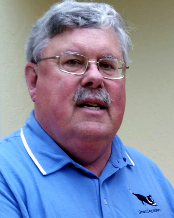
SMART DOG MININGTM
It
takes a smart dog to find hidden treasures
Cyanide Leaching Methods: An Overview
With low grade deposits, or finely disseminated deposits, recover of
precious metals can become difficult.
For this reason, leaching, particularly with cyanide, is a
common processing method.
But it is not perfect. For
a general over view of the cyanide process see An Introduction to
Cyanidation
(https://www.smartdogmining.com/notebook/Intro%20to%20Cyanide.html).
Leaching operations are general heap, vat, or tanks.
Heap and vat are generally considered batch as the ore is
placed and then the leach solution (lixiviant) is then sprayed over
the ore. In tank
leaching is generally continuous as the ore flows through the tank
with the lixiviant solution.
Heap leaching, while simple and relatively easy, does have problems.
First it is not quick, in fact it can take years and
sometimes over a decade to complete, with the leach solution still
coming off the heap.
Also it is not very efficient as recoveries of 50% or less are
common even after the many years of operation.
This is because the leach solution does not uniformly go
through the heap. Also
varying material in the heap can effect cyanide consumption. Also
planning for final closure and actually achieving it will be years
after the main mining is done. But the cost and ease of operation
make it fairly popular.
Some key issues in heap leaching include:
·
Drainage pathway issues
·
Dry pockets, no leaching
·
Leach is by surface dissolution, large particles can take a long
time to leach
·
Presence of lixiviant consuming minerals
·
Presence of preg robbing materials (carbonaceous)
·
Uneven base can cause pooling and thus improper drainage
·
Insufficient base slope for good drainage
·
Broken or plugged sprinklers/lines
Overall ore processing is relatively simple, often just mine and
crush, then stockpile.
Crushing is seldom more than three stages.
Some ores may require a coarse grinding step with then an
agglomeration process for the fines, but often not.
Ore processing and tails disposal are one operation.
Another method, that is less common, is vat leaching. There are
several types of vat leaching, the simplest being either rectangular
or circular tanks where the ore is dumped into.
Leach solution is then sprayed over the ore and allowed to
drain from the bottom.
This is done until the leachate is at or below a desired cutoff. The
tank is then emptied, and then refilled for another cycle.
These cycles can be from 1 to several days, depending on the
size of the vat and the ore grade.
It can suffer many of the
same issues as heap leaching, particularly recovery.
·
Drainage pathway issues
·
Dry pockets, no leaching
·
Leach is by surface dissolution, large particles can take a long
time to leach
·
Presence of lixiviant consuming minerals
·
Presence of preg robbing materials (carbonaceous)
·
Broken or plugged sprinklers/lines
Since the operation is generally cyclical, final closure is usually
soon after the mining is complete, though final closure may take a
while due to flushing the cyanide out of the tailings. While
slightly more costly then heap leaching, mostly due to double
handling of the ore (loading, unloading then final disposal), vat
leaching is fairly economic.
As with heap leaching ore processing is again fairly simple,
with similar process of mining and up to three stages of crushing.
Though with a shorter leach cycle time coarse grinding and
fines agglomeration is done more often. Allows for dry tailings
disposal.
Tank leaching uses two or more tanks (often four or more), where a
slurry of finely ground ore flows from one tank to the next.
The tanks usually have mixers/agitators that keep the slurry
in suspension. The most
common method is a counter current flow with fresh/stripped
lixiviant going into the last tank while fresh ore is added to the
first tank. The ore is
then moved from the first towards the last, while the lixiviant is
moved from last to the first.
While sounding complex this is often done by having the tanks
built on a slope allowing the ore/slurry to flow by gravity while
the lixiviant is pumped from the top to the next tank.
This allows maximum extraction of the ore values, and maximum
lixiviant loading.
Main issues are:
·
Most expensive in capital and operating costs.
·
Requires fine grinding to achieve maximum recovery.
·
Increased mechanical complexity requires more maintenance.
·
Higher energy consumption.
·
More water required which often means a thickener on the tails.
·
Dry tails disposal is difficult.
After the leaching the values need to be recovered from the
lixiviant. This is
usually called stripping.
Several methods can be used, but will not be covered in this
article. For both heap
and vat leaching, stripping the ore values from the lixiviant is a
separate process. With
tank leaching a method called CIP (carbon-in-pulp) allows fro
stripping during the leach process.
Alternatively the lixiviant is stripped using similar methods
to heap and vat.
Generally the volume of lixiviant in tank leaching is greater
requiring large stripping facilities.
In many places the use of chemical lixiviants, particularly cyanide
is becoming harder to use do the local restrictions.
As an alternative to cyanidation try flotation
(https://www.smartdogmining.com/topics/Cyanide%20Alternative.html).
insert content here

o
40+ years’ experience in the mining industry with strong mineral
processing experience in precious metals, copper, industrial
minerals, coal, and phosphate
o
Operational experience in precious metals, coal, and phosphate plus
in petrochemicals.
o
Extensive experience performing studies and determining feasibility
in the US and international (United States, Canada, Mexico, Ecuador,
Columbia, Venezuela, Chile, China, India, Indonesia, and Greece).
o
E-mail:
info@smartdogmining.com
